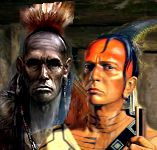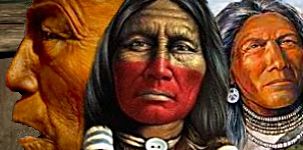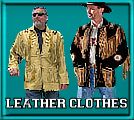 |
|
 |
|||
 |
 |
 |
 |
||
|
|
|||||
      |
Cherokee Dances
|
Artifact Replicas|Jewelry|Clothing|Figurines|Art Prints|On Sale|Closeouts
Custom Search
What's New Cherokee DancesCherokee Dances fall into two basic categories: Social Dances and Religious or Ceremonial Dances. Religious Dances always involved pre-selected dancers and complex choreography and steps, and also included at least one social dance at the end of the ceremonies which was open to all of the participants in a ceremonial dance. Social Dances are more prevalent in modern Cherokee societies and some of these dances were adopted as the result of contact with other Native American tribes. One example of this is the Cherokee Butterfly Dance, which is also known as the Ladies' Fancy Shawl Dance on the modern day pow wow circuits. The Cherokee have a legend explaining how this dance came to be, but the Crow also have another legend with their own version of this dance. In both cultues, it started out as a powerful medicine dance, but in today's culture it is one of the popular competition dances at social powwows on the Northern pow wow circuit. Many of the traditional dances performed in ancient times have been preserved and are still practiced. However, many of these dances no longer serve the same functions as before and are performed only for religious ceremonies or as reenactments of the ancient culture. Some of the dances are now illegal to perform as they traditionally incorporated the taking of human scalps. Modern Cherokee societies also have divergent customs as the result of geographical isolation and varying degrees of contact with other tribes and local cultural influences that have shaped the modern dance customs of the Cherokee groups occupying North America. The most important religious dance of the Cherokee people is the Stomp Dance. In a ceremonial setting, this dance is always preceded by a game of A-ne-jo-di, or Stickball, which resembles the European game of LaCrosse, but a competitive or socal A-ne-jo-di game doesn't always include the dance. It depends on the intent of the gathering -- whether it is a religious, or social gathering. The Cherokee used masks in numerous dances. One such dance, known as "The Booger Dance", was usually performed in the late fall or winter. It's intent was to make fun of and belittle the enemies of the Cherokee. The Booger masks were made to represent the faces of people who were the enemies of the Cherokee. In earlier times, they may have represented the Chickasa or Seneca people, who were enemies of the Cherokee before European contact. After interaction with the whites became prevalent and hostilities started, the masks began to resemble a bald man with a very round face, since many of the white men of this era wore their heads shaved, and generally had less angular features than the Indian peoples. Today, the Booger mask is a popular item produced for the tourist trade, especially in North Carolina. The Bear Dance, Beaver Dance, and Forest Buffalo Dances also employed masks which represented the respective animal  portrayed. The Cherokee also have an Ancient Eagle Ceremonial Dance that includes elaborate 6 foot wings made from white or nearly white bald eagle feathers, which is danced mostly today for exibition purposes. portrayed. The Cherokee also have an Ancient Eagle Ceremonial Dance that includes elaborate 6 foot wings made from white or nearly white bald eagle feathers, which is danced mostly today for exibition purposes. Cherokee Stomp DanceCherokee Booger DanceWood-gathering Dance (Women's Dance)Cherokee Friendship DanceCherokee Common DanceCherokee Burial DanceCherokee Coat DanceeRound Dance (Intertribal Social Dance)Cherokee Green Corn DancesCherokee Beginnings DanceCherokee Pipe Dance (late 19th century)Cherokee Pigeon DanceCherokee Quail DanceChicken (Tsi-ta-ga) Dance (late 1800s)Cherokee Horse Dance (1800s)Cherokee Raccoon DanceCherokee Groundhog DanceAnt DanceCherokee War DanceCherokee Scalp Dance (Ancient)Cherokee Snake Dance (Ancient)Cherokee Uk-ah Dance (16th century)Cherokee 7 year Renewal DanceCherokee Bear DanceCherokee Beaver DanceCherokee Forest Buffalo DanceCherokee Eagle DanceCherokee Butterfly Dance (also known as the Ladies' Fancy Shawl Dance)
Dancing 'Til Dawn Art Print Millar, Marianne 29 in. x 25.25 in. Buy at AllPosters.com Framed Mounted |
|
||||||||||||||||||||||||||||||||||||||||||||||||||||||||||||||||||||||||||||||||||||||||||||||||||||||||||||||
| ||||||||||||||||||||||||||||||||||||||||||||||||||||||||||||||||||||||||||||||||||||||||||||||||||||||||||||||||
Site Designed by: Mazaska Web Design
Hosted by: HostIt4You.com
© 1999-2008 AAANativeArts.com
+1133
file: cherokee dances

